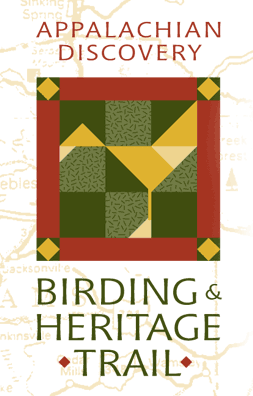Butterflies are in full swing now, so this is your opportunity to get out there and see something new. Just like a big kid, I am drawn to the flashy display of the swallowtails- the big showy beasts of the
lepidopteran world. But there are
plenty of skippers worth learning as well.
 Little Glassywing, Pompeius verna
Little Glassywing, Pompeius vernaLittle
Glassywing is a folded-wing skipper in the gray to black range, and that pattern of clear patches make it recognizable. The fem. Dun, Northern Broken Dash and Little
Glassywing are often found together and called "The Three Witches."
"
Skipper's all look the same..." is the common complaint. But it is just not true. Take that extra moment to look at pattern, color and the way the skipper holds it wings. Start by sorting skippers into "folded wing" or "spread wing species."
 Delaware Skipper, Anatrytone delaware
Delaware Skipper, Anatrytone delawareTopside looks a bit like the
Hobomok skipper- but the brighter orange color was the first clue to this species. Underside, there is no comparison, Delaware is plain orange, where the
Hobomok has large patches of color. Not a common skipper, but found in wet-to-damp areas.
 Artic Skipper, Carterocephalus palaemon
Artic Skipper, Carterocephalus palaemon Ding, ding, ding, now the true butterfliers' heads are spinning off their necks! This is a sub-artic species of the boreal forest- one I recently saw in Michigan. The point being: NOTHING else looks like an Artic! Those spots are so bold and dashing- this guy is a standout in the Skipper world- a regular George Clooney!
Other Butterfly news:
 Harris's Checkerspot, Charidryas harisii.
Harris's Checkerspot, Charidryas harisii.NOT a Skipper, but another smallish orange to black butterfly. This too was taken in the U.P. of Michigan, but we should (or once did) have populations in Ohio. All our wetland species are in trouble, not surprising as we continue to drain away some of the best natural areas of Ohio.
Its host plant is
Flat-topped Aster, so now
you can be on the look-out for a rare butterfly in Ohio.
 Ram's Head Orchid, Cypripedium arietinum
Ram's Head Orchid, Cypripedium arietinum  Growing in small cluster next to the trail, they could be easily overlooked. Since we were unaware of their presence, it was a lucky find! Ram's Head orchids, are rare an in decline as their habitat is reduced. There is an excellent paper found here, if you would like to read more about their presence in Michigan.
Growing in small cluster next to the trail, they could be easily overlooked. Since we were unaware of their presence, it was a lucky find! Ram's Head orchids, are rare an in decline as their habitat is reduced. There is an excellent paper found here, if you would like to read more about their presence in Michigan.
































 The view scape. Now imagine the haunting call of the common loon. This is how we spent the entire day.
The view scape. Now imagine the haunting call of the common loon. This is how we spent the entire day.

 So, here is our educational sign for Bobolink protection, and there goes the mower grinding up babies on June 30th in 2010. Not a pretty sight.
So, here is our educational sign for Bobolink protection, and there goes the mower grinding up babies on June 30th in 2010. Not a pretty sight. After all, what could be cuter than a baby Bobolink? You don't even have to be a birdwatcher to appreciate the bubbly calls of these gorgeous "ricebirds" from Argentina.
After all, what could be cuter than a baby Bobolink? You don't even have to be a birdwatcher to appreciate the bubbly calls of these gorgeous "ricebirds" from Argentina.





 Nina H., Faye S., your Weedpicker, and "Kat Doc" are standing by the trail head sign at the Conrad Tract. To get there, follow the directions to the Wilderness Ttrail, but stop a 1/2 mile short- at this sign.
Nina H., Faye S., your Weedpicker, and "Kat Doc" are standing by the trail head sign at the Conrad Tract. To get there, follow the directions to the Wilderness Ttrail, but stop a 1/2 mile short- at this sign.






